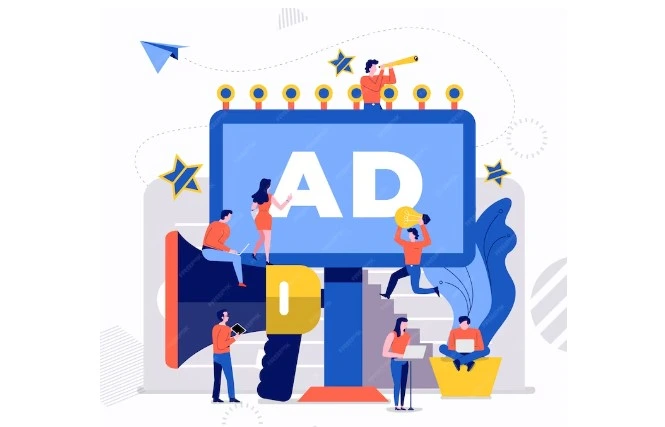Ad Creative Testing: A Key to Performance Marketing Success
Recently updated: February 13th, 2025
In this digital era, advertising is an important aspect of every successful marketing strategy. By testing and optimizing your ad creative, you can increase your return on investment (ROI) and conversions.
Ad creative testing creates multiple forms of your ads along with different important elements that help you understand what your target audience wants. You can make the best data-driven decisions to improve your advertising performance.
What Is Ad Creative Testing?
Ad creative testing is a process that aims to predict how well an ad will perform in the market. It is a trustworthy and effective process of systematically testing your ad creative to identify the most effective elements and optimize your advertising performance.
Through Ad creative testing, you can do experiments with different aspects like headlines, images, ad copy, layout, and design of your ad creative to know which elements are most effective in driving the attention of target audiences to take action.
It will identify the best and most relatable variation that generates the highest click-through rates (CTR), conversions, and return on investment ROI.
By identifying these metrics of your ad creative, you can determine which elements are driving the best results.

Benefits of Ad Creative Testing?
Ad creative testing is all about creating new ads and crafting ads that enhance marketing efforts.
Here are some benefits of why testing your ad creatives is important.
Craft the best ads
Creative testing helps you create engaging advertisements that will connect with your audience, and improve the return.
Budget-friendly
Creative testing helps you improve your ads by focusing on elements that are responsible for successful campaigns and avoiding the waste of valuable money on ads that don’t work properly.
Provide valuable insights
Creative testing provides you with valuable insights into your customers’ thoughts about your campaign that will aid in making the right decisions whenever you create an ad design.
Identify interactive elements
Creative testing helps you collect information about elements that your audience interacts with most and also, helps in growing your business.
In total, creative testing works as the backbone of your advertisement campaign and helps you in guiding you on how to make ads impactful and effective.
Types of Ad Creative Testing
There are several types of tests that you can opt for to gain insights and optimize your advertising performance.
Let’s see some of the most common types of ad creative testing:
A/B testing
A/B testing is the most common and basic form of ad creative testing, where you compare two variations of an ad element such as headlines and images to determine which element performs best.
It allows you to test one variable at a time and measure the impact on metrics.
Multivariate testing
Multivariate testing includes testing of variations of multiple elements simultaneously. It will allow you to understand the interaction with elements and identify the best combination that will give amazing results.
Sequential testing
In sequential testing, you will do testing on variations of your ad creative over some time. Eventually, you optimize and enhance your ad performance based on the valuable insights gained from tests.
This way is useful when you have limited resources and want to your ads.
Competitive testing
This type of ad testing involves analyzing the ad creative of your competitors that will identify trends, gaps, and opportunities. By understanding what works for your competitors, you can gain important insights to improve your ad creative and stand out in the market.
Each type of ad creative testing has its benefits and effects. The choice of testing type will depend on your objectives and resources of your advertising campaigns. It is very important to select your plan accordingly to ensure accurate and desired results.
Setting Up An Ad Creative Testing
We have mentioned proper steps that will help you know how to set up testing ads.
The steps involve the full process from the design stage, to set up ads, and ad testing:
Design your ads
Start with designing your ad by using digital advertising images, printed copy, audio content, videos, or billboards.
Now, check and research the following aspects,
- Your content should hook your target audience. Use creative ideas on themes, messages, and backgrounds that will grab the audience’s attention.
- Use engaging visuals and voiceovers that will draw attention to your message and make sure that images that you are using are linked to your brand.
- Make sure that your message is clear and in clear language by focusing on the key idea you want to get across, and don’t include too many messages about your product.
- Only use the correct offerings of your products that will build trust with your customers.
- Your content must have a unique selling point (USP) that shows your target audience how your brand is different from the competition.
- Your content has a clear call to action (CTA) that will be beneficial for your audience to get what they want.
Decide the element you want to test
When you design your ads, then many aspects need to be checked. Also, there are many different parts of marketing that we need to consider like social media ads, TV ads, print advertising, and many more.
Further research on these aspects can help you ensure consistency across them and understand which approach of advertising will result in a diverse audience reach.
When you have decided which ad to put into research, it is time to plan which elements of those ads you would like to test and which metrics you will use to evaluate your ad success.
Choose different metrics to measure
You need to ensure that your ad meets all the requirements, and for that, you have to measure metrics that include:
- First impressions
- Appeal
- Clarity
- Engagement
- Believability
- Relevance
- Brand fit
- Uniqueness
- Call to action
Select market research software
Now, you have your ads ready with you and know what you want to measure, so you must find a fine way to measure it.
There are a few ways to test advertising, one of the best tests is the A/B testing that we mentioned above.
This method shows each of the advertisements being tested to separate groups of respondents, each group equally structured in terms of demographics, purchase behavior, and whatever else is important in the sample.
Beyond quantitative research, you might want some qualitative responses that tend to be more spontaneous. Qualitative research can be done through target groups, in-depth interviews, or online methods.
Do the survey/test
When your ads are ready to test on your chosen market research software, it’s time to decide to whom you will show your ads.
The sample should be representative of your target audience and significant so that you can trust findings with confidence.
In terms of conducting the survey, you have to make sure that every ad receives the same amount of attention with the same set of questions.
Key Metrics To Measure During Ad Creative Testing
Whenever you are conducting ad creative testing, it is important to measure the right metrics to determine how well your ad is doing.
Nearly 90%, of your core audience may not initially respond to a call to action in the way you intend.
Measuring creative testing metrics will overcome this problem and help you identify the creatives that make the maximum impact on your target audiences.
Here are some key metrics you should need to consider while tracking:
Click-through rate (CTR)
This metric calculates the percentage of people who click on your ad after seeing it. A higher CTR indicates that your ad creative is engaging and drives more organic traffic to your website.
Conversion rate
The conversion rate measures the percentage of people who take the desired action, such as making a purchase or filling out a form after clicking on your ad. A higher conversion rate means that your ad creative is effectively driving conversions and generating leads.
Cost per conversion
Cost per conversion refers to the average cost you spend to generate a single conversion. It will help you to understand the efficiency of your ad creative and optimize your advertising budget for a better return on investment.
Return on ad spend (ROAS)
Return on ad spend calculates the revenue generated for every dollar, which is spent on advertising. It helps in determining the profitability of your ad creative.
Average watch time
Average watch time provides insights into your ad’s success in holding the viewer’s attention by tracking the watch duration. If your average watch time is longer, it’s a proper sign that your content is engaging and attractive.
By tracking these metrics across different variations of your ad creative, you can identify the suitable variation that performs best on these key metrics. This data-driven approach also allows you to optimize your ad creative strategy.
Best practices for ad creative testing
The point of creative testing is to find a suitable ad creative combination. Below are some best practices to help you in the creative testing process:
Come up with a hypothesis
When creating your ad, you have to figure out what you want to learn from the testing in the end, which will guide you in deciding which variables to test.
Having a focused hypothesis can give you logic for choosing an element. Without it, you cannot categorize your variables, which may lead to an unfocused test and compromised data.
Set your budget
To determine the ideal budget for your testing, multiply the cost of each acquisition by the number of conversions.
Remember, each component of your test should have the same budget otherwise some versions might get more attention and exposure, which can affect the results.
Develop a proper roadmap for creative testing
If you are running multiple tests for creative ads, then make sure you have a clear testing plan that connects them. And, ensure that your insights are continually useful.
Next, you have to prioritize mobile best practices so that every element of your ads should stay focused on expressing creative ideas, stand out from the other elements, and maintain consistency without introducing extra variables.
Don’t conduct your tests collectively
Your test must run at a specific time to generate desired results. Try to determine the duration for your tests based on your campaign objectives and audience size.
Use automated testing tools
Sometimes, it takes work to test ad designs manually and keep track of every aspect. That’s where automation comes in; it will allow you to avoid the repetitive tasks that are connected with large-scale testing.
With automated testing tools, you can generate all possible ad variations and set up the testing campaign successfully. These automated tools include handling budgets, ad placements, and the audience.
Avoid showing other ads to your test audience
Your test audience should not see ads that are not related to your creative testing campaign. It can motivate users to take some type of action and change your audience’s behavior, which can affect the accuracy of your test results.
Tools for ad creative testing
To conduct different types of ad creative testing effectively, there are several tools available in the market that can provide valuable insights.
Some of the popular tools you can consider for ad-creating tests:
Google Ads
Google Ads provides a full range of features and tools for ad creative testing. You can use the platform to create multiple ad variations by splitting your audience and measuring the performance of each variation.
This platform also provides valuable insights and recommendations to optimize your ad creative.
Facebook Ads Manager
Similar to Google ads, Facebook ads manager also allows you to create multiple ad variations, splitting your audience, and tracking the performance of each variation.
This platform provides detailed analytics to help you optimize your ad creativity and improve your performance on Facebook.
A/B testing software
A/B testing software can help you make your ad creative testing faster and more efficient.

These tools will allow you to create and manage multiple variations of your ad creative and measure the performance of each variation. Some popular A/B testing tools are Optimizely, VWO, and Google Optimize.
Data analytics tools
There are some data analytical tools present online such as Google Analytics and Adobe Analytics. You can use these tools to measure the performance of your ad creative.
These tools can provide in-depth insights about customer behavior, conversion, and other valuable metrics that will be useful in making your ad creative decisions.
Conclusion
Ad creative testing is a crucial aspect of advertising strategy. By efficiently testing different variations of your ad creative, you can identify the most valuable elements and optimize and enhance your advertising performance.
It will allow you to understand your target audience in a better way and gain valuable insights to improve your marketing strategies.
For conducting ad creative testing, it is important to have a well-defined framework in place. Define clear objectives, identify test variables, select a target audience, run your tests, and analyze the data.
In the end, by following best practices and selecting the right tools, you can excel in ad creative testing. That will maximize your ROI and conversions, particularly for SEO services and SEO packages.
Latest posts by Vijaya Tyagi (see all)
How To Track Shopify SEO Performance & Metrics (2025) - January 14, 2025
Link Building Strategies: The Ultimate Techniques for 2025 - December 31, 2024







